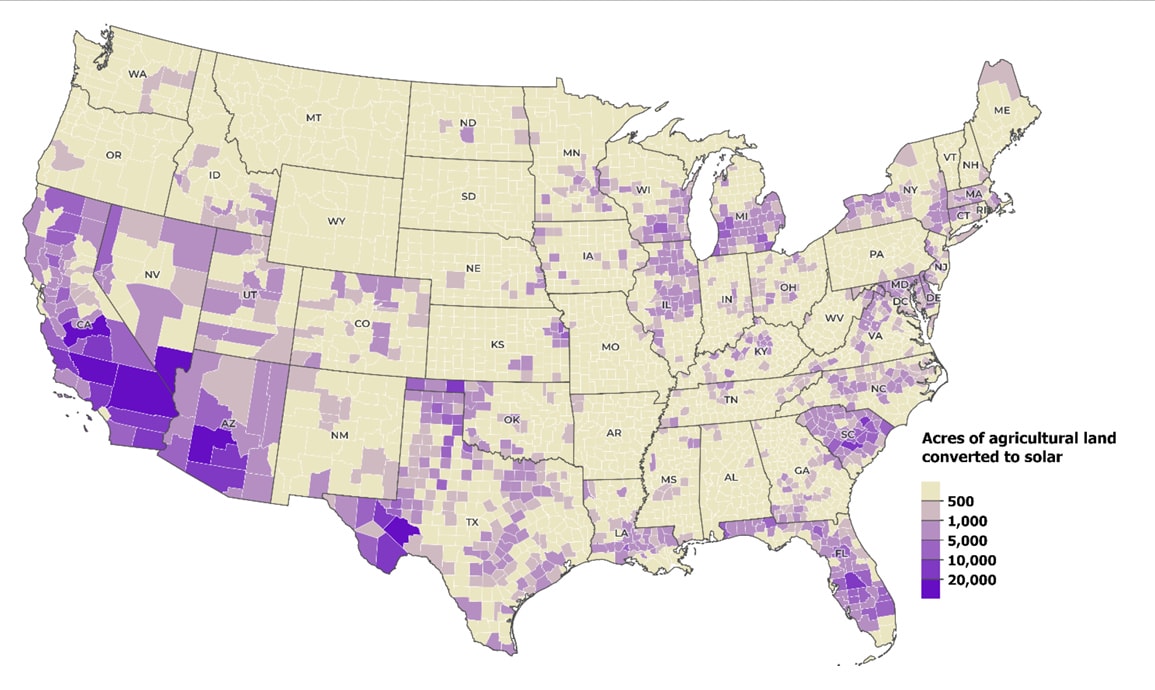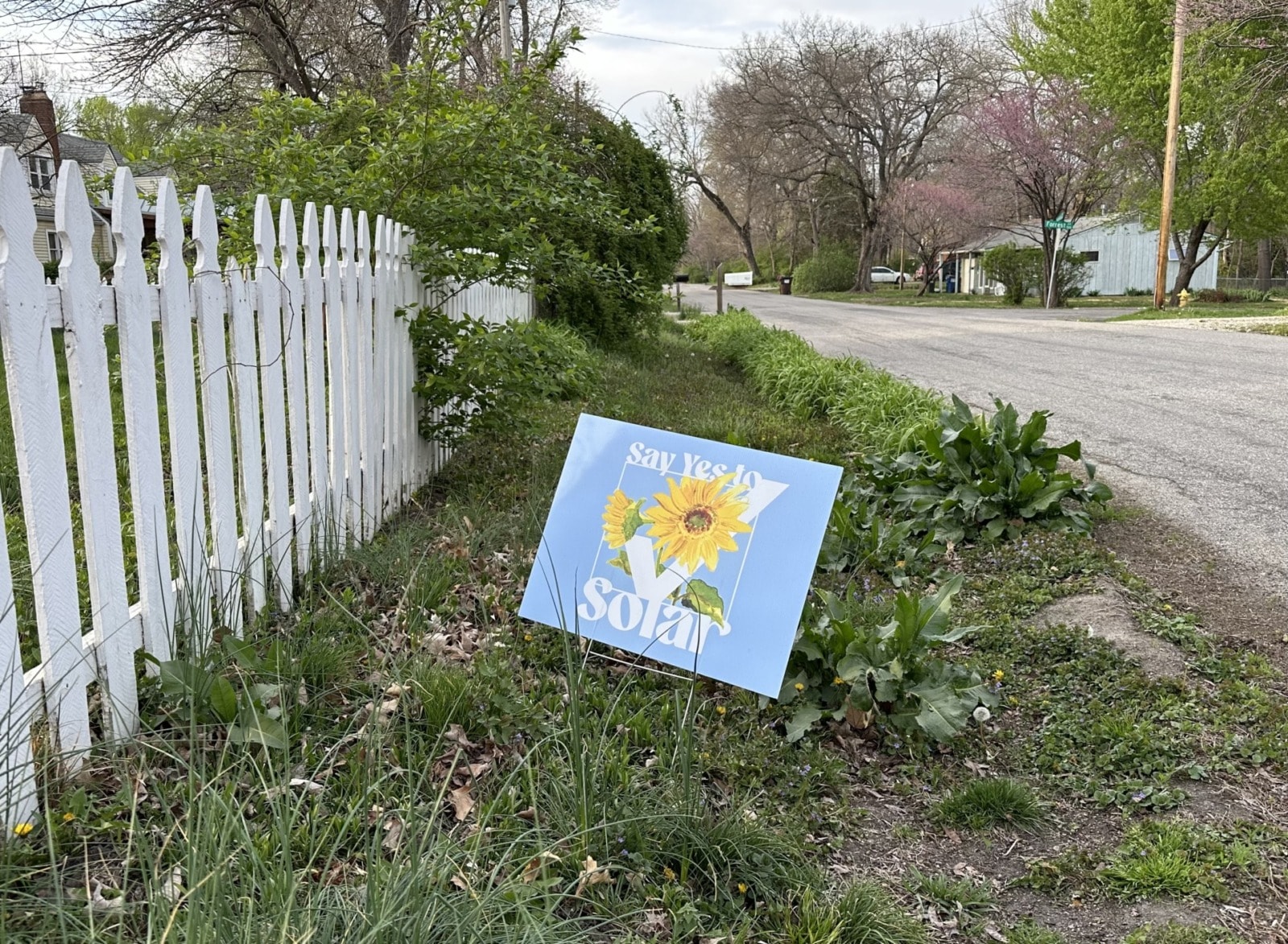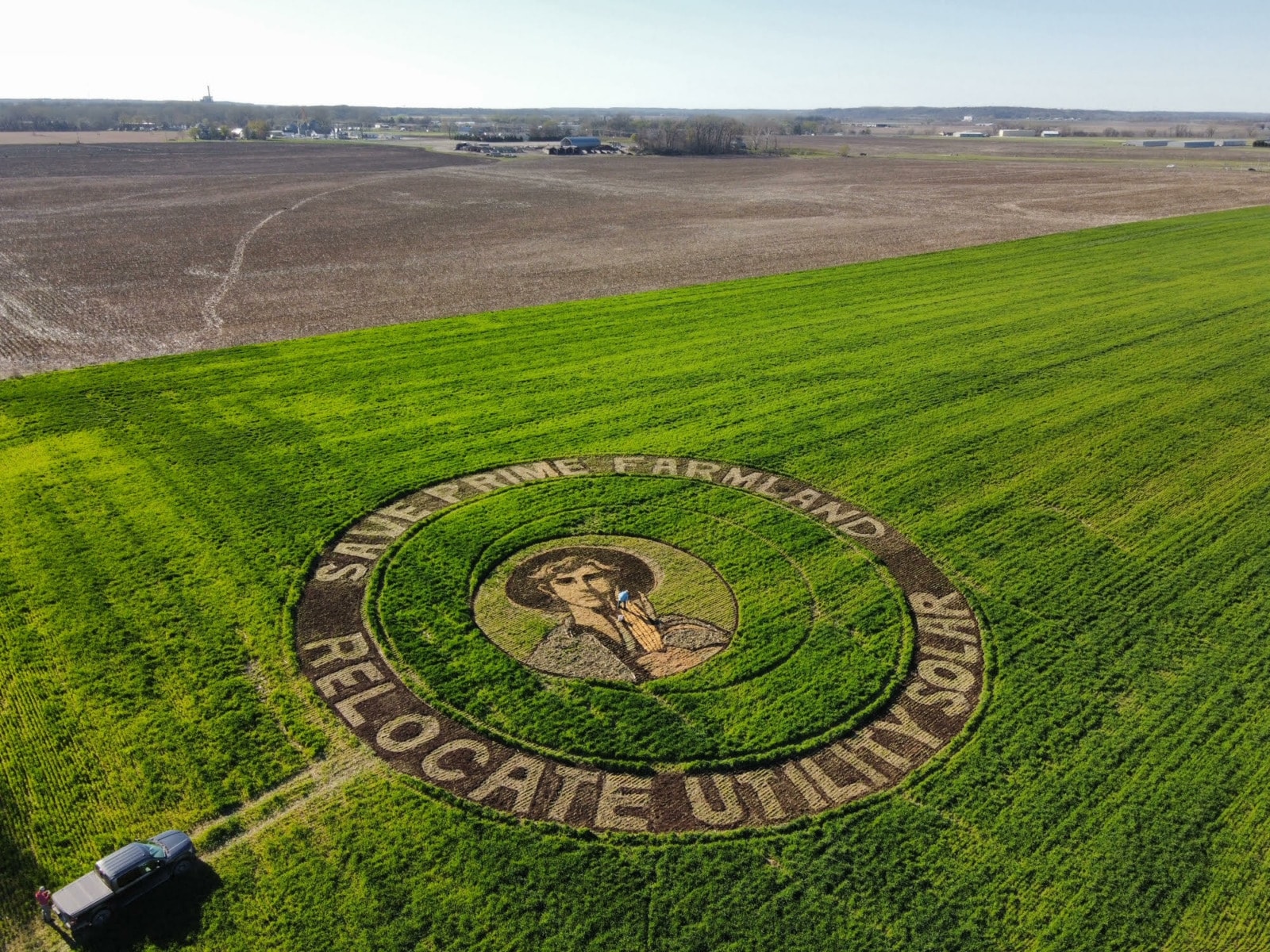Douglas County Commission Approves Massive Solar Project Not a Light Decision
Published April 17th, 2024 at 1:09 PM
Above image credit: A "Say Yes to Solar" sign in Lawrence. (Cami Koons | Flatland)LAWRENCE, Kansas — After almost nine hours of testimony, Douglas County commissioners have approved a conditional use permit for a 600-acre solar project north of town.
It is a huge project, with compelling arguments for and against.
Farmers and landowners who neighbor the proposed site opposed solar panels occupying the groundwater and nutrient-rich farmland of the Kaw River Valley.
Renewable energy supporters saw the project as a vital step towards reducing greenhouse gas emissions and slowing the effects of climate change.
Both sides were out in force on Saturday, offering public testimony that made up most of the meeting.
“I’ve been making land-use decisions in this community for over a decade now, and I have never seen such even differences of opinion,” Commissioner Patrick Kelly said towards the end of the meeting.
More on Flatland
Daylong Solar Debate
Opponents reiterated throughout that they are not against solar projects. Rather, they oppose the placement of the project.
Representatives of the Kansas Sky Energy Center, which will be constructed and operated by local electric utility Evergy, responded in the meeting that there is no “plan b” site in Douglas County.
“This project wants to be at this location in Douglas County,” Matt Gough, an attorney representing the applicant, said following public comment on Saturday. “If the long road to approval requires more miles, then so be it.”
Douglas County is an example of what many solar projects, and the associated public discourse, could look like across the country.
In 2022, American Farmland Trust developed a model to illustrate changing U.S. landscapes through 2040 with the increase in solar energy projects.
The model uses “conservative” estimates of solar demand and historical siting information to estimate demand for 2.5 million acres of utility scale solar projects across the U.S. That number could grow to 7 million acres if the U.S. is to meet its goal of zero greenhouse gas emissions by 2050.
The model projects that 83% of solar development will occur on agricultural lands. And based on historic policies, it expects almost half of that development to happen on “nationally significant” (prime or unique) agricultural land.
Projected Agricultural Land Conversion to Solar

Although that is only a small fraction of the 895 million acres of farmland in the U.S., the relationship between agricultural land and renewable energy expansion is clear.
It’s logical too. Farming and solar energy are both in the business of harvesting sunshine.
Zack Pistora, a lobbyist for the Kansas chapter of the Sierra Club, said this solar project is one of “the most responsible and urgent things that we can do.”
He added that “604 acres of solar panels for Kansas are worth a lot more than 600 acres of corn and commodity crops.”
The project will only occupy a fraction of more than 28 million acres of cropland in Kansas. But it will generate more solar energy than the entire state currently generates, according to Solar Energy Industries Association data.
“I actually think that land is going to be able to heal itself…rather than every year being worked and worked for the agriculture,” Pistora said, pointing to the solar project’s commitments to vegetative cover.
“We do need to take advantage of our new opportunity to harvest a new crop,” he said.

Kansas has a rich agricultural history. But, Pistora added, it also has a rich history in fossil fuels. The Kansas Sky Energy Center could help convince other parts of the state to embrace its potential in the renewable energy sector.
In many parts of the country, renewable energy projects have met stiff political headwinds. A recent investigation by USA Today found that 15% of U.S. counties have policies in place to prevent renewable energy expansion.
Pistora testified in favor of the project on Saturday and is excited that it passed. But he added that the work is far from finished.
“What happens now is to make sure that the project lives up to its promises, that there’s accountability, that people cooperate for the benefit of the project’s success,” he said.
As the solar project moves forward, the commission has more items to approve or deny, including the agrivoltaics, stormwater, traffic and vegetation management plans.

Unite or Further Divide
“I really was proud of the community for being so informed … It was well-mannered and a respectful conversation,” Pistora said of Saturday’s proceedings.
Before scores of community members took the microphone in the packed meeting room to try and sway commissioners, Commissioner Karen Willey urged attendees to give one another “respect and grace.”
“There is space for us to come together as well as spread apart,” added Commissioner Kelly. “That choice is yours … whether we divide further or whether we can find a place to meet in the middle.”
Despite often high emotion through public testimonies, the whole affair was civil.
Folks talked about the stormwater management plan, their experiences farming in that area, concerns about climate change and some feelings that the commission was not adhering to its comprehensive plan.
Ward Lyles, an associate professor at the University of Kansas urban planning program, told Flatland the proposal created a cognitive dissonance within the community.
Douglas County prides itself on being a progressive leader in the state and it also fought hard for an innovative local food plan, which values protecting agricultural land.
“And so, you have a deep value conflict,” Lyles said.
“I don’t know whether this will make it easier for the community to have discussions … or if it’ll mean that every battle becomes a proxy for the first battle, because the healing isn’t done.”
Cami Koons covers rural affairs for Kansas City PBS in cooperation with Report for America. The work of our Report for America corps members is made possible, in part, through the generous support of the Ewing Marion Kauffman Foundation.



